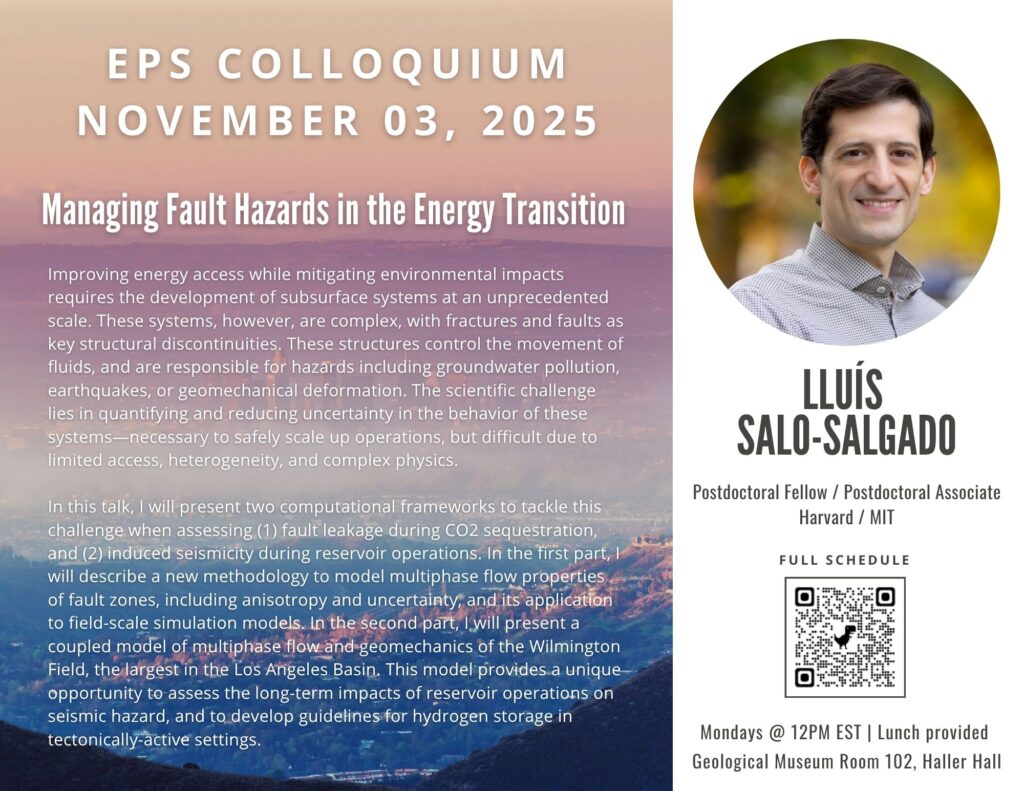EPS Colloquium – Lluís Salo-Salgado, Harvard
Managing Fault Hazards in the Energy Transition
Improving energy access while mitigating environmental impacts requires the development of subsurface systems at an unprecedented scale. These systems, however, are complex, with fractures and faults as key structural discontinuities. These structures control the movement of fluids, and are responsible for hazards including groundwater pollution, earthquakes, or geomechanical deformation. The scientific challenge lies in quantifying and reducing uncertainty in the behavior of these systems—necessary to safely scale up operations, but difficult due to limited access, heterogeneity, and complex physics.
In this talk, I will present two computational frameworks to tackle this challenge when assessing (1) fault leakage during CO2 sequestration, and (2) induced seismicity during reservoir operations. In the first part, I will describe a new methodology to model multiphase flow properties of fault zones, including anisotropy and uncertainty, and its application to field-scale simulation models. In the second part, I will present a coupled model of multiphase flow and geomechanics of the Wilmington Field, the largest in the Los Angeles Basin. This model provides a unique opportunity to assess the long-term impacts of reservoir operations on seismic hazard, and to develop guidelines for hydrogen storage in tectonically-active settings.
To be added to the EPS colloquium mailing list, please contact Caroline Carr at carolinecarr@fas.harvard.edu

Lluís Saló-Salgado is a postdoctoral fellow at Harvard University and a postdoctoral associate at the Massachusetts Institute of Technology in Cambridge, MA. He obtained his PhD from MIT Civil and Environmental Engineering in 2024, advised by Ruben Juanes, and previously a BS in Geology from University of Barcelona and a MS in Geotechnical Engineering from UPC-BarcelonaTech. His research focuses on elucidating the interplay between geologic faults, fluids, and seismicity to enable sustainable development of engineered geosystems for the energy transition.

